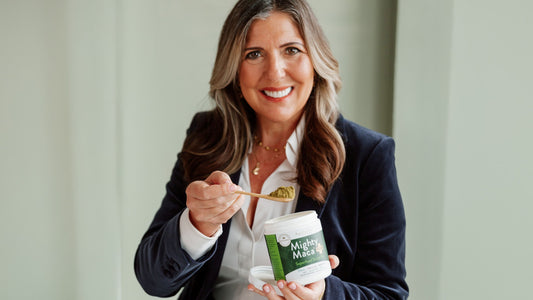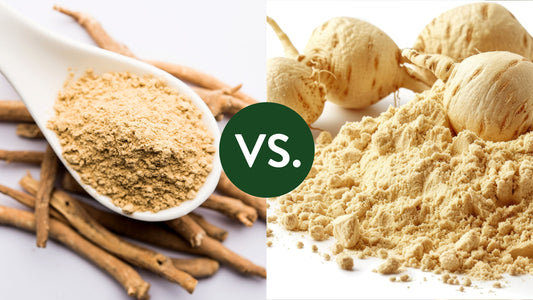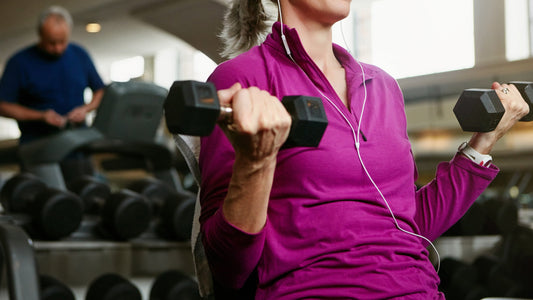(It’s not a laughing matter)
How many times have you been sitting with your girlfriends, giggling over a cell phone photo or hilarious “back in the day” story…
…when one of you says, “Please stop making me laugh, I’m about to pee my pants!”

And then inevitably that makes everyone laugh and you are SO glad you wore a panty-liner that day.
This unintentional little squirt of pee when you laugh, cough or exercise is actually a medical condition referred to as stress incontinence.
But incontinence is no laughing matter.
This article will discuss how you may be increasing your risk for developing urinary incontinence issues. Or should you already have leakage, these conditions (obesity, blood sugar control, insulin resistance, pre-diabetes and Type 2 Diabetes) can worsen your issues.
I’ll also discuss some of the preventative things you can do as well as the existing therapies that can improve upon urinary leakage issues.
A Common Issue As We Age, And Under-Reported
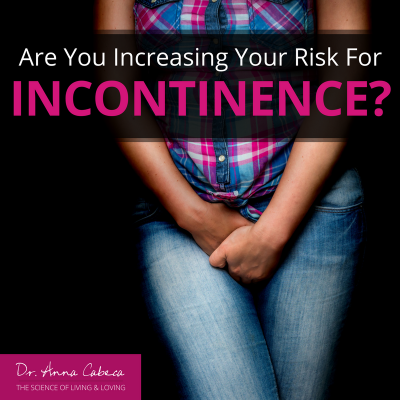
Incontinence prevalence data varies widely, but stress incontinence (also referred to as stress urinary incontinence or SUI) has been estimated to affect over 50% of women between the ages of 20 to 80 years (1).
Stress incontinence is the most common type of urinary incontinence for women (the others being urge incontinence or an overactive bladder, overflow incontinence, nocturia which means night time urination, and dysuria or painful urination).
Other estimated ranges for incontinence in women over the age of 60 have been 17% to 49% (2).
Why the difficulty in getting an accurate count? Many women do not report incontinence to their doctors or even seek medical help, feeling embarrassed or not recognizing it is treatable. Older women may fear that surgery is the only solution. Sometimes it is treated as a symptom of another disease.
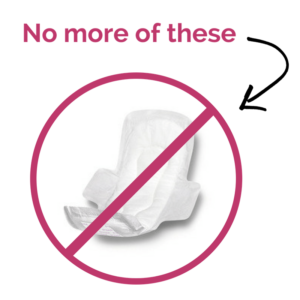
Numerous studies have found that occurrence of incontinence increases as women age, with one study finding a typical rate in young adults of 20-30%, a peak around middle age (prevalence 30-40%) and a steady increase at older ages (prevalence 30 to 50%) (3).
While incontinence may begin as an infrequent little annoyance, the issue likely won’t go away until you address it.
So stop buying larger and larger absorbent pads!
Did you know it has been estimated that 70% of period-specific products are purchased for incontinence reasons? (4)
Urinary leakage will typically get worse over time, resulting in greater embarrassment, and potentially even a condition called, pelvic prolapse.
In pelvic prolapse the bladder and uterus can actually collapse into the vagina. Surgery is often the only proposed solution.
Why Do Women Develop Urinary Incontinence Issues?
Our sexual hormones naturally decline as we age. Effects of this hormone decline are a primary root cause of most urinary incontinence problems. This hormone decline affects,
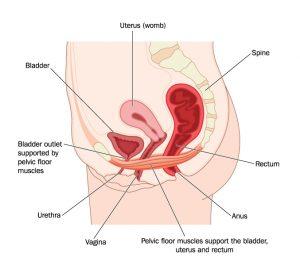
- The vaginal tissue, which becomes less elastic – so we’re DRY down there
- The pelvic floor muscles, which weaken and deteriorate. These are the muscles that support your bladder and urethral tube (the tube that empties urine out of your bladder) – so we start to leak!
- The lining of your urethra, which begins to thin – so intercourse may become painful
There are many other contributing factors as well.
Things you consume, as well as things you do, can contribute to incontinence issues.
If you drink alcohol or even carbonated beverages, you can increase your risk for having leakage issues. Even eating acidic or spicy foods can cause problems. If you are often constipated due to a poor diet, that causes pressure on your pelvic floor as you strain, and that can further cause incontinence.
If you are a smoker, you are at greater risk (due to your coughing causing stress on the pelvic floor muscles). High-impact exercise can create stress on the pelvic floor muscles resulting in urinary leaks (although it is important to note that studies also show that regular physical activity can protect against SUI).
Having certain types of surgeries or taking certain medications can also cause incontinence. If you are taking diuretics for blood pressure issues, for example. Or if you are taking sedatives, anti-depressants or even antihistamines, some can have a side effect of urinary leakage as they relax the bladder.
Oral hormone replacement therapies (HRT) such as taking estrogen can cause incontinence symptoms (5). A lot of women aren’t told this.
Childbirth can result in incontinence symptoms as well, although there is some controversy relating to how this occurs (but clearly, this lifestyle decision is worth it!)
A review of available research shows that the main factors predisposing to incontinence include: genetic factors, female gender, white race, hysterectomy, pregnancy, childbirth, and menopause (6).
There are also several disease states that can be risk factors for urinary incontinence issues. And these health conditions are generally attributed to lifestyle decisions you make! The good news about that? You can choose to make lifestyle choices which can positively affect your risk for developing incontinence.
Underlying Health Conditions Are Contributing Risk Factors For Incontinence
There are 3 serious health conditions which can increase your risk for urinary leakage problems:
- Obesity
- Pre-diabetes and those having blood glucose issues and/or insulin resistance
- Type 2 Diabetes
I’ll talk a bit about the research behind each of these.
Obesity Is A Risk Factor For Incontinence
Obesity and abdominal fat may influence incontinence issues by straining the pelvic floor muscles and connective tissue that support the urethra, as well as putting increased pressure on the bladder (7).
Studies have found that weight loss interventions reduced the frequency of stress incontinence (SUI) episodes and that improving longer term weight loss maintenance provided ongoing benefits relating to SUI issues (8).
One study even found that weight losses between 5% and 10% of body weight were enough to see significant incontinence improvements (9).
Obesity is also a risk factor for developing insulin resistance and Type 2 diabetes, and both of these conditions are proven risk factors for urinary incontinence. As obesity increases in the US in particular, and also among children in the US, we will likely see more issues of urinary incontinence.
Pre-Diabetes, Insulin Resistance And Metabolic Syndrome
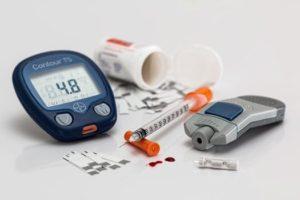
Another study showed that insulin resistance in post-menopausal – nondiabetic – women was found to be a risk factor for urinary incontinence (11).There is some evidence that women with pre-diabetes are also at higher risk for urinary incontinence. In one national survey done in 2001-2002, women with impaired fasting glucose measures showed the same increased prevalence of urinary incontinence as found in women having diabetes. This same group of women had significantly higher rates of incontinence than women having normal fasting glucose measures (10).
Emerging research has provided evidence that metabolic syndrome may play a significant role in the development of a particular type of incontinence, an overactive bladder (OAB) in women. And metabolic syndrome is a condition that includes obesity, hypertension and glucose intolerance. Insulin resistance is viewed as an integral component of metabolic syndrome (12).
The strong relationship that has been found relating to obesity and insulin resistance, in regards to being contributing factors to incontinence, suggest that improving one’s blood glucose control and weight loss are potential interventions to address urinary incontinence in women, especially in those having diabetes.
Urinary Incontinence Is 50 To 200% More Common In Women With Type 2 Diabetes
Research has found that those having Type 2 Diabetes are at greater risk for urinary incontinence.
Sound epidemiologic evidence from several studies has shown that urinary incontinence is 50 to 200% more common in women with type 2 diabetes than among women with normal glucose levels (13).
Some research suggests that nearly 50% of severe incontinence could be avoided by preventing Type 2 Diabetes! (14)
This same research found that diabetic women in their study had a 2.5-fold increased risk for urinary incontinence.
How Do These Health Conditions Result In Urinary Incontinence?
The actual reason for the increased urinary incontinence seen in those with obesity, insulin resistance and Type 2 Diabetes is still not 100% clear. The suggestion is that these conditions cause physiological, microvascular and neurological complications that result in damage to bladder innervation (nerve stimulation to the bladder), altered muscle function and urothelial dysfunction.
SUI is likely due to the dysfunction of the muscle of the urethral sphincter along with the pelvic floor muscles and their innervation being impacted.
Two microvascular complications found in those having diabetes were significantly associated with incontinence, those being microalbuminuria and peripheral neuropathic pain. Microalbuminuria is an early sign of vascular disease, often associated with being a predictor of kidney and heart issues.
With Type 2 Diabetes in particular, the nerve damage seen in this condition can lead to several changes in bladder function, including:
- Weakening bladder muscles
- An overactive bladder (urge incontinence)
- Decreased bladder sensation (so you may be unaware you need to pee, or you may not completely empty your bladder)
- Water retention (potentially causing nocturia, the need to get up to pee multiple times at night – or feeling like you need to pee)
Some medications for the treatment of Diabetes and related health issues can also impair continence. Some may cause fluid retention.
ACE inhibitors can trigger urinary incontinence because they may create a lot of coughing. Calcium channel blockers used for hypertension can lead to overflow incontinence (where the bladder doesn’t empty completely).
How To Prevent Urinary Incontinence
A lot of prevention can be found in the everyday lifestyle decisions you make.
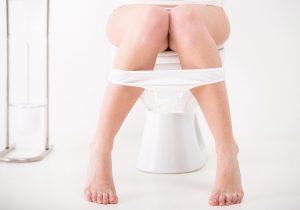
Note that there are a variety of tremendous health benefits to eating healthy foods and keeping your weight at a healthy level… incontinence is just one of them. There are proven links between obesity, blood glucose control, insulin resistance, pre-diabetes and Type 2 Diabetes! And these conditions can often be improved upon and even controlled with the appropriate diet and by maintaining a healthy weight.
Maintain A Healthy Weight And Eat An Anti-Inflammatory Diet
I recommend a Keto-Green® diet and lifestyle. You can learn much more about what this is, how it works, as well as the extensive research behind the lifestyle’s positive health effects here.

When you eat a lot of processed foods like many of us do you are eating a lot of unhealthy carbs and sugar. Your insulin is continually stimulated and this leads to insulin resistance. This eventually then leads to your developing diabetes.There are many studies which have shown that a ketosis state not only supports weight loss, but that it also reduces overall inflammation and blood sugar issues (insulin resistance and diabetes).
A Keto-Green diet is a low carb diet high in healthy fats, but please read one of my many articles on the benefits of ketosis to get a greater understanding. I have developed a key – and critical – piece to the puzzle! And that is getting your body alkaline prior to focusing on achieving ketosis. So important.
Pelvic Floor Muscle Exercises
One of the best things you can do to prevent or improve upon incontinence issues is an exercise called Kegels. Kegel exercises strengthen the pubococcygeus muscle, a muscle that can be thought of as a supportive “hammock” that holds up your uterus, bladder and bowel so they don’t fall downward into your vagina.
See the photo (at the beginning of this article) so you can see why this hammock, the pelvic floor muscles, are so important!
And you are never too old to gain benefits from doing them.
A lot of women don’t do Kegels on a regular basis. And many women do Kegel exercises incorrectly! Do you? (and how can you know?)
Kegels are primarily used in the treatment of stress urinary incontinence and are based on improving two functions of the pelvic floor muscles. First, to strengthen that hammock! Second, is strengthening relating to the sphincter closure mechanism of the urethra. Kegels can improve issues with both the amount of leakage as well as the frequency.
You can learn more about how to do the perfect Kegel here. This short video will also tell you how you can do a self-test to see how strong your pelvic floor muscles might be.
You can also use jade balls/lelo balls/kegel balls to strengthen these muscles.
It is also important to avoid exercises that cause increased pressure to the pelvic floor.
Bladder Journaling, Bladder Training And Scheduled Toileting
If you are experiencing urinary leakage you should keep a bladder journal. This information is incredibly helpful to your doctor.
Are you having leakage while exercising? While coughing? Or are you having the issue only at night? Do you leak after drinking something like citrus juice, which is a bladder irritant…or what about coffee? Coffee and tea are diuretics that encourage you to need to pee. When you feel like you just HAVE TO PEE…when you get to the toilet, do you actually pee?
All of this information is important when discussing incontinence with your doctor. Oh, and you SHOULD discuss this with your doctor! Don’t be embarrassed…he/she has heard it all before!
Once you talk with your doctor about your issues, he/she may suggest you work at “re-training” your bladder, especially if you have urge incontinence (an over active bladder). To do this you will attempt to hold your urine for a few minutes after you feel the urge to pee. And then you will try and increase this time period.
Scheduled toileting is also an attempt to train your bladder There are many other behavioral techniques that are recommended. The good news is that these are inexpensive and easy to try. The bad news (maybe) is that they require YOUR compliance!
Incontinence… There’s An App For That!
 There are actually some iPhone and google apps that focus on helping women having incontinence issues. I haven’t used them myself, but they appear to be reputable. Let me know if you try them and how they work for you!
There are actually some iPhone and google apps that focus on helping women having incontinence issues. I haven’t used them myself, but they appear to be reputable. Let me know if you try them and how they work for you!
https://www.continence.org.au/pages/pelvic-floor-first-app.html
http://xn--tt-via.nu/?page_id=395&lang=en
Locally Applied Vaginal Estrogen Therapy
This therapy can be prescribed as vaginal suppositories, creams or rings.
These are delivered locally within the vagina and therefore minimize estrogen increases in blood levels along with related possible side effects.
They help improve the thickness and elasticity of the vaginal lining but do not appear to affect the deeper tissue or supporting muscles. Existing research does not show that they address incontinence issues, although some anecdotal feedback from some women indicates that it may. Additional research is required to validate this further. You can find out more about estrogens versus the use of androgens (such as DHEA) here.
If you have or have had breast cancer, you may wish to read my article on breast cancer and various therapies such as estrogen and DHEA, here.
DHEA
DHEA is an androgen and is one of our sex hormones that just like estrogen, progesterone and testosterone, naturally declines with age. Research has shown that locally applied DHEA is very effective in addressing vaginal and vulva dryness and irritation. But even better, research has shown that DHEA improves the musculature of all three layers of the vagina. The density of collagen fibers in the vaginal wall are positively affected and the muscle layer is stimulated.
So what does that mean?
This can mean improved arousal and orgasm, as well as providing additional muscular support for the pelvic region which can help with urinary leakage. It is why I chose DHEA to be an ingredient in my Julva® feminine restorative cream for the vulva.
Women using Julva® are telling me that they can exercise without worrying, no longer need to wear panty liners, and feel more confident.
If you haven’t tried Julva, you can try a 7 night sample for free by clicking here… and you can even get my special report on vaginal dryness treatments, for free!
Final Thoughts
As you can see there are many things you can do to prevent or improve upon incontinence issues.
Adhering to a dietary lifestyle that will help you maintain a healthy weight is one of the most important things you can do. Being overweight not only increases your risk for incontinence but impacts your risks for many other diseases, including insulin resistance, pre-diabetes and Type 2 diabetes.
You can do this! And let me know your thoughts and how you do with these recommendations.
References
(1) Patrick J. Culligan, MD, and Michael Heit, MD, University of Louisville Health Sciences Center, Louisville, Kentucky. Urinary incontinence in women: evaluation and management. Am Fam Physician. 2000; Dec 1;62(11):2433-2444.
(2) https://www.omicsonline.org/open-access/management-of-stress-urinary-incontinence-in-females-with-diabetic-mellitus-2155-6156.1000351.php?aid=24544
(3) https://www.ncbi.nlm.nih.gov/pmc/articles/PMC4520337/
(4) http://www.swanstudy.org/urinary-incontinence-problematic-for-many-women-over-40-study-finds/&sa=D&ust=1507060571858000&usg=AFQjCNGoOTKU7Q1D0c3_D5v4sOEoO4wMTA
(5) https://www.ncbi.nlm.nih.gov/pubmed/15728171
(6) https://www.ncbi.nlm.nih.gov/pmc/articles/PMC4520337/#CIT0010
(7) https://www.ncbi.nlm.nih.gov/pmc/articles/PMC2848400/#R18
(8) https://www.ncbi.nlm.nih.gov/pubmed/20643425
(9) https://www.ncbi.nlm.nih.gov/pmc/articles/PMC3038422/
(10) https://www.ncbi.nlm.nih.gov/pmc/articles/PMC2848400/
(11) https://www.ncbi.nlm.nih.gov/pubmed/26529410
(12) https://www.ncbi.nlm.nih.gov/pmc/articles/PMC3547179/
(13) https://www.ncbi.nlm.nih.gov/pmc/articles/PMC2706373/
(14) https://www.ncbi.nlm.nih.gov/pmc/articles/PMC2706373/

